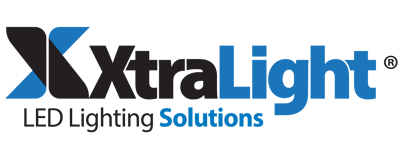Closest to natural sunlight, the full spectrum provides a wide distribution of power throughout the entire visible light spectrum. It is designed to increase light saturation while simultaneously matching a plant's chlorophyll absorption peaks. This stimulates enhanced ATP production within plant cells to promote faster growth and increased THC/CBD concentrations in cannabis flowers.
To learn more about the benefits of Full Spectrum LED grow lights, please click here.
Designed to replicate the high-pressure sodium light spectrum (HPS), this spectrum provides enhanced growth for a wide array of vegetation. Using a split spectrum system, you'll experience shorter growth cycles that are ideal for shorter plants focused on the 440 nm (blue) and 660 nm (red) wavelengths.
To learn more about the benefits of Split Spectrum LED grow lights, please click here.
No, LEDs are widely known to have excellent thermal management and may just feel warm to the touch. This is very important for indoor grow operations as growers do not have to worry about excess heat discharge around their plants requiring no extra cooling equipment.
To learn more about the thermal benefits of LED grow lights, please click here.
Yes, studies suggest that the average LED grow light will consume 40% to 50% less energy when cooling costs are considered. This is because there is little to no thermal energy discharge, making LEDs much more efficient especially for indoor applications.
To learn more about the benefits of LED grow lights, please click here.
Unfortunately, some LED grow light manufacturers will market the benefits of LED technology into a product, add a very low price tag, and built a light that is incapable of providing the power necessary to stimulate enhanced plant growth, leaving a bad impression for any grower. We wrote a blog just for you called "How to Buy the Right LED Grow Light For You", outlining how you can narrow down your options to get the best bang for your buck.
Plants do not use lumens, plants use photosynthetically active radiation (PAR) and Photosynthetic Photon Flux Density (PPFD). When investing in a grow-light, the only metrics you need to understand to make an informed purchase is PPF, PPFD, and Photon Efficacy. The accuracy of these variables is heavily relied on by scientists, researchers, and industry leaders alike.
To learn more about the differences between PAR, PPF, and PPFD please click here.
Data suggests that cannabis on a cellular level performs chlorophyll absorption and photosynthesis at almost every wavelength of light. Meaning that a full spectrum solution that replicated the sun would provide more usable light to the plant over a split spectrum. This is so each of the plant's chlorophyll can function at the same capacity, resulting in a taller, stronger, and more florid plant.
To learn more about which LED spectrum is best for you, please click here.
Our LED grow light systems come standard with a 10-year or 100,000-hour factory warranty. We thermally and operationally test every fixture before shipment. In comparison to HID & HPS, you'll see around a 6 to 10 times difference in operational life-span.
To learn more about the sustainability benefits of LED grow lights, please click here.
LEDs are currently at the forefront of indoor horticulture and vertical farming. Growers now have the ability to digitally control their light spectrum to create the optimal environment for maximizing harvests.
- LEDs use significantly less energy
- LEDs emit little to no heat reducing cooling costs
- LEDs last 6 to 10 times as long as HID or HPS equivalents
To learn more about the benefits of switching to LED, please click here.
Yes, light uniformity is one of the main variables in determining consistent crop yields. Ensuring that you have optimal light distribution and canopy coverage can have a big impact on the final product of your harvest.
To learn more about the benefits of light uniformity, please click here.
